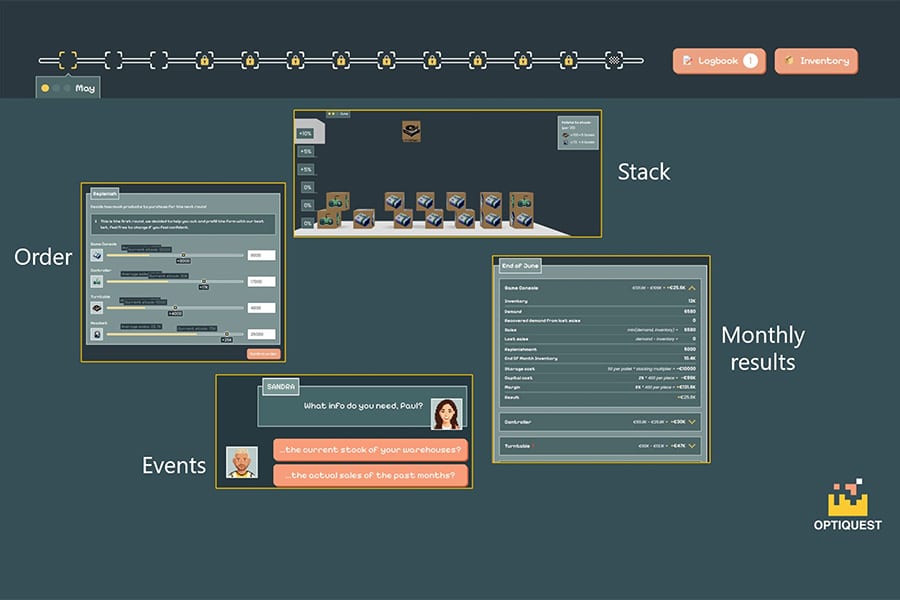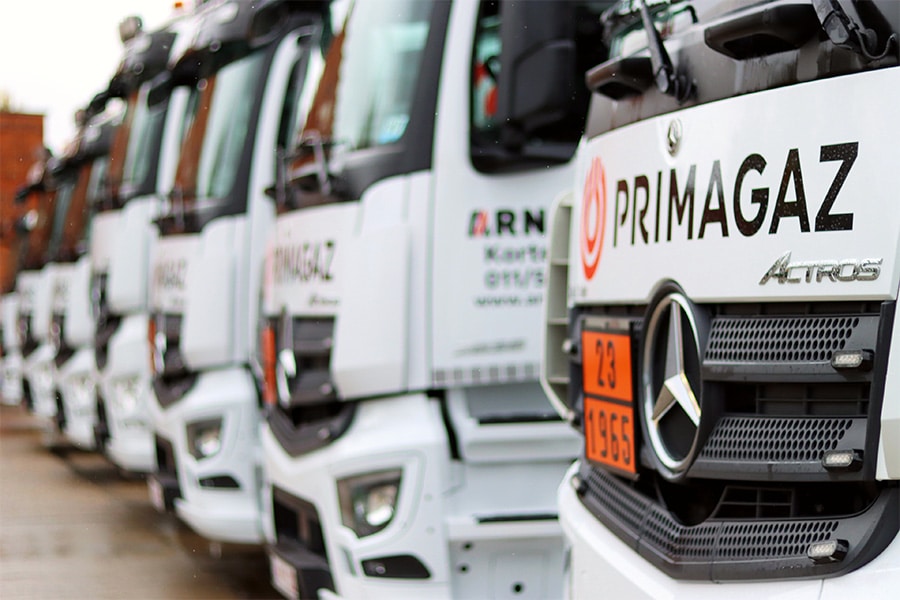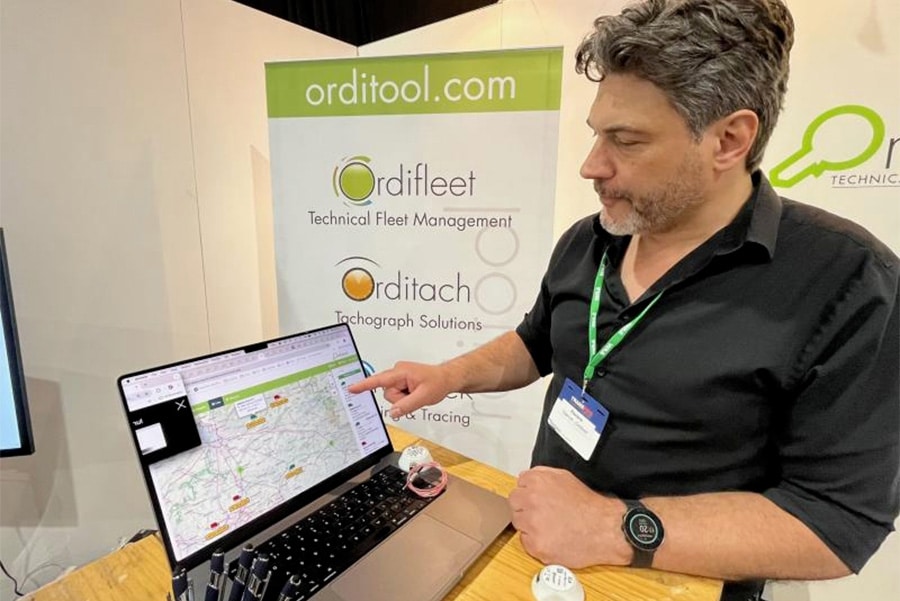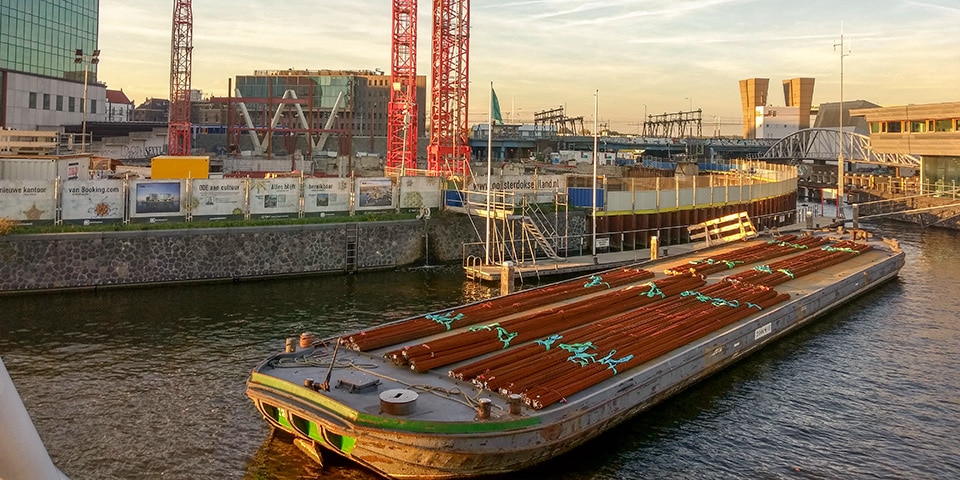
Water transport: a sustainable solution in the GWW sector
Deck barges have been used as work and storage vessels in construction work as well as for transporting goods since the beginning of the last century. Their very limited draught makes them ideal for transport over water. Even in inner cities, where low bridges and all kinds of navigation profiles have to be taken into account.
Towing service and deck barge rental Blom BV, has years of experience in the field of rental and transport of, among other things, deck barges, hold barges and hopper barges. With its own storage and transshipment quay in the Amsterdam Coenhaven. In recent years, the fleet has expanded to include coupled deck barges (15-42 meters), pontoons, painting rafts and tugs, making it more than 70 barges. Speaking is Nancy Blom, director at Blom: "Because of our convenient location and spacious loading and unloading quay (with 70-ton crane), we can not only combine road and water transport, but also transship from board to board. Our equipment can be used throughout the country for all kinds of water works, as well as in Belgium, Germany and France."
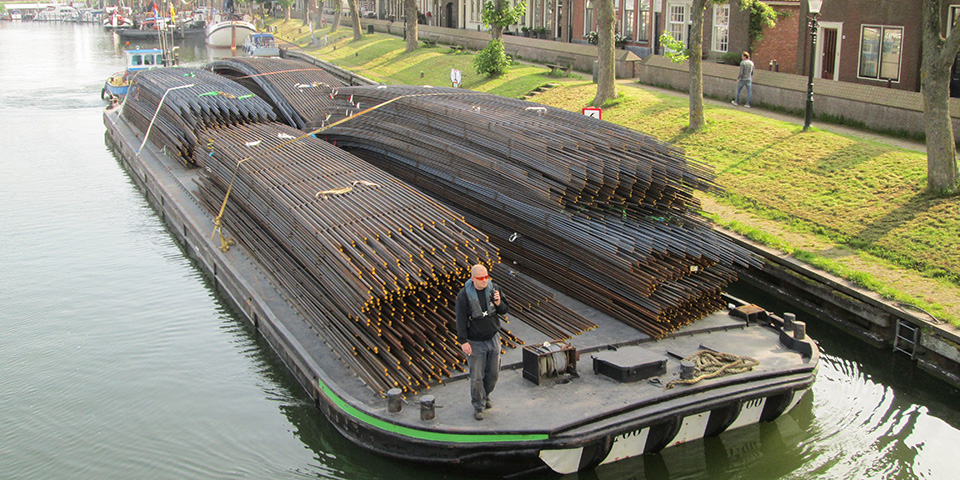
The rebar was then transported by water to the construction site.
Multi-purpose
"A logistics process starts with the request from the customer. What do you want to transport? How big, how wide? We make a plan for that. We have a solution for every challenge." However, Blom's deck barges and pontoons can not only be used for the sustainable supply and removal of building materials, construction materials and equipment. The possibilities are many. "Our deck barges are also often used as floating work platforms or construction hubs. The coupling deck barges are used when working with cranes or piling rigs. And the pontoons can even be used for events. Or for the largest inflatable fish in the world..."
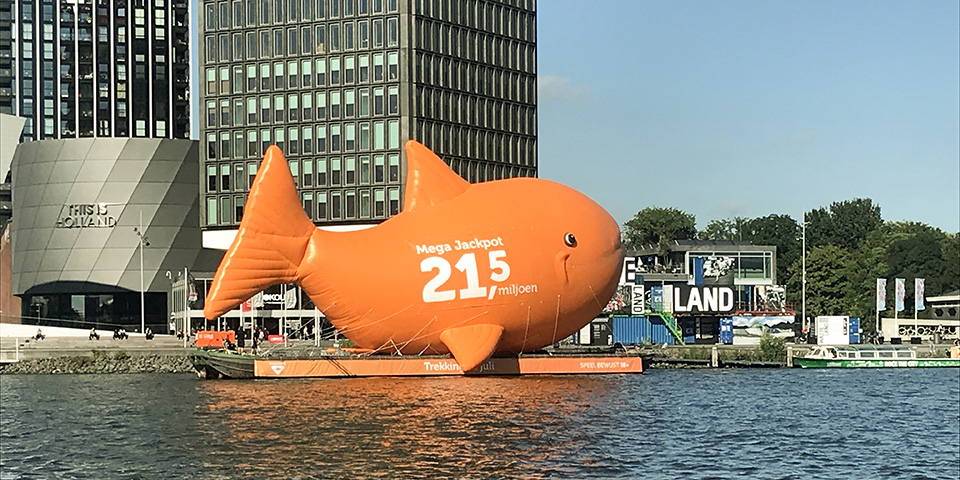
The pontoons can even be used for events. Or for the largest inflatable fish in the world.
Inner-city sustainable transportation
Many current and future construction projects in Amsterdam are right on the canal or on the IJ River. "So locations like that are very easy to reach by water," says Blom. "For the sustainable supply and removal of construction materials and building materials to and from the inner city of Amsterdam, Blom has developed 'Green Development.' This progressive method ensures that freight traffic in the Amsterdam city center and thus C02 emissions are reduced and sustainable logistics are promoted." Blom cites as an example the Egelantiersgracht in the Jordaan where, in the project to improve the quay, a thousand truck trips were saved by transport by water. In another large project, almost all the building materials-such as the sand, concrete piles and even 300 tons of reinforcing steel-were transported by water. "The huge amount of rebar was transferred from Germany at our own quay from board to board on our deck barges and then sailed into downtown. It's safe to say that we can transport anything that needs to be transported by water. We know the city like the back of our hand and have a solution for everything!" Blom concludes, "The current tugs run on biodiesel. To be even more sustainable and socially responsible, we are currently having an electric tugboat developed. This way we are completely ready for the future!"
